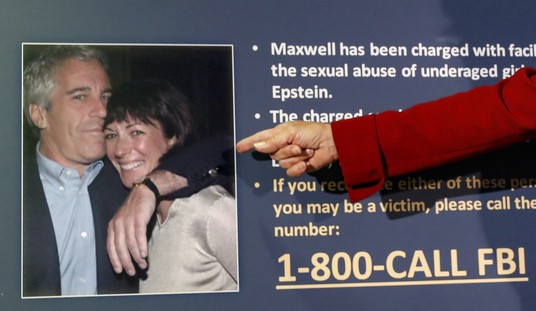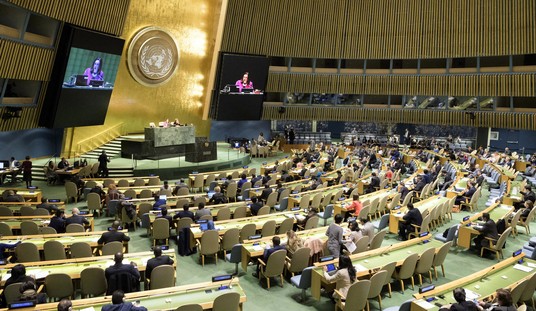A consensus has begun to emerge that police should wear body cameras in order to increase transparency and accountability. Should the federal government foot the bill for it? This morning, the Department of Justice and newly installed Attorney General Loretta Lynch announced that they would spend $20 million on a new program to outfit local police with the technology. The scale of this turns out to be almost impossibly modest, but still also raises questions about the DoJ’s role in this decision:
A $20 million pilot program to extend the use of police body cameras for “transparency” was announced by the Department of Justice on Friday, amid nationwide protests over police treatment of suspects.
A string of recent cases — the fatal shooting of Michael Brown by a white officer in Ferguson, Mo., the killing of a homeless man on Los Angeles’ Skid Row and most recently the spinal injury while in police custody that led to the death of Baltimore’s Freddie Gray — have prompted calls for greater transparency from authorities and more adoption of body cameras.
“Body-worn cameras hold tremendous promise for enhancing transparency, promoting accountability, and advancing public safety for law enforcement officers and the communities they serve,” new Attorney General Loretta Lynch said in a press release.
So how much will the program actually buy in body cameras? Most of the funds will go to competitive grants — $17 million, or 85% of the money Lynch has set aside for it, at least at first. Another $2 million will go to training and support, with the final $1 million used for evaluation of the program’s effectiveness.
Not that there will be much effectiveness to measure. NBC News’ report notes that the city of San Francisco has already decided to adopt body cams for all patrol officers, which will cost them $6.6 million alone.
The mayor of San Francisco wants to spend $6.6 million over two years to equip every patrol officer with a body-worn camera, a move that comes amid a national firestorm over the way police treat African-American men.
Mayor Ed Lee, San Francisco County Board Supervisor London Breed and San Francisco Police Chief Greg Suhr held a news conference on Thursday to tout a package of public safety reforms that would buy the cameras for up to 1,800 officers. Lee also wants to hire 250 new officers over the next two years that would cost $21.3 through 2017. The money will come out of the mayor’s budget, and will include software, video storage and staffing.
Even a smaller city like San Jose will face a significant bill:
In San Jose, Police Chief Larry Esquivel said he wants to test out body cameras for a dozen officers before spending $1 million to suit up his entire department.
Clearly, then, $17 million is a drop in the bucket. At best, it might outfit a dozen towns like San Jose, or two or three cities the size of San Francisco. It’s not even enough for a state, let alone the nation. This is just a $20 million PR effort from the DoJ and Lynch, a way to get ahead of the bad headlines coming from Baltimore.
It’s more than that, though. This is another step in the de facto nationalization of police forces under the aegis of the DoJ. Milwaukee’s Sheriff David Clarke warned about that earlier in the week, and this is another soft step in that direction. The $20 million pilot program will almost certainly have to expand significantly in order to have an impact, and the DoJ will end up imposing it as a standard through the enforcement of their Civil Rights Division. That erodes the kind of local control that keeps police forces responsive to their own communities, much the same way that the avalanche of mandates from the Department of Education has done to school boards around the country. This is a decision that should be left to states and local communities.
Frankly, this seems like a pretty good investment for police and their local communities. They complain that the public usually sees or becomes aware of the worst moments of their work. As this news report today from WSB-TV in Atlanta demonstrates, body-cam video would give police departments plenty of material to change the narrative, or at least put it in perspective:
Body cams as regular gear make sense from both perspectives. However, the federal government doesn’t have the jurisdiction or the money to drive it. This should be a local and state level decision, and the communities that benefit from it should pay for it, too.








Join the conversation as a VIP Member